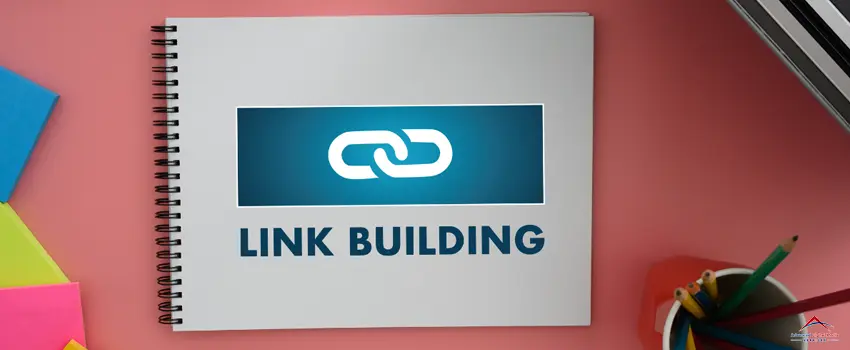How do you increase website traffic? If you are looking for ways to increase your website traffic, internal linking opportunities might be the solution you’ve been searching for. By strategically linking related pages, you can improve your website’s navigation, reduce bounce rates, and boost your search engine rankings. Internal linking can also enhance your user experience and keep your visitors engaged for longer.
In this blog, you’ll learn how to take advantage of internal linking opportunities for home repair services and share some actionable tips that will help you optimize your website’s performance.
What are internal links?
Internal links connect one website page to another page on the same site. They allow website visitors to navigate between different pages and sections of a website, making finding the information they need easier. Internal linking for SEO helps search engines understand a website’s structure and pages’ importance, which can impact a website’s search engine rankings.
Tips for Internal Link Building Strategy
Now that we understand the benefits of internal linking opportunities to your SEO campaign, it’s time to look at internal linking best practices and tips to boost your website’s ranking in search engine results pages.
1. Create a site structure.
Site structure is organizing your website’s content, pages, and sections. A well-organized site structure helps visitors navigate your website quickly and improves the user experience.
Here are quick steps to creating an easy-to-navigate and hierarchical site structure:
- Determine your website’s main categories or sections based on the content you offer.
- Identify subcategories or sub-sections within each main category.
- Create a hierarchy for your pages within each category, with the most critical pages appearing at the top level.
- Use descriptive and concise labels for each category and page to help visitors understand the content.
- Create a diagram or map of your site structure to help you organize and visualize the relationships between pages and sections.
2. Use descriptive anchor text.
One of the best internal linking opportunities is to use descriptive anchor text. When you create an internal link, the text you use to link to another page on your website is called anchor text. Using descriptive and relevant anchor text is essential because it provides users and search engines with information about the content they can expect to find on the linked page.
Descriptive anchor text also helps search engines better understand the context of the linked page, which can help improve the relevance and ranking of your website in search results.
Refrain from using generic phrases such as “click here” or “read more” as they do not give any idea about the linked page’s content. Instead, using specific and relevant keywords that precisely describe the linked page’s content is advisable. Using specific and relevant content improves SEO and amplifies user experience by offering additional context and enhancing the navigation on your website.
3. Prioritize relevant links.
When adding internal links, it’s important to prioritize those relevant to the page’s content. This means you should focus on linking to pages that provide additional information or context to the current page. Doing this, you help visitors find related content and keep them engaged on your site for extended periods.
For example, suppose you have a blog post about home repair tips for beginners. In that case, you can link to other blog posts or pages on your website that provide more specific information on plumbing or electrical repairs. This helps visitors find relevant content efficiently, keeping them engaged and interested in your site.
4. Link to older content.
Another of the most effective internal linking opportunities is linking to older content. This effective internal linking strategy helps keep your website visitors engaged and interested in your content.
Here are examples of how linking older content adds value to your strategy:
- Increases visibility – Linking to older content can increase its visibility on your website, making it easier for visitors to find and engage with it.
- Boosts SEO – Linking to older content can help boost its SEO by driving traffic and indicating to search engines that it is still relevant and helpful. This can help improve the page’s ranking and visibility in search results.
- Provides additional value – By linking to older content relevant to the topic, you are providing additional value to your readers and demonstrating the depth of your expertise in the subject matter.
- Reduces bounce rates – Linking to older content can minimize bounce rates by encouraging visitors to explore your website further and spend more time there.
- Improves user experience – Providing links to older content can improve the overall user experience of your website by helping visitors find related content and creating a sense of coherence and organization.
5. Regularly audit and update your links.
Regularly auditing and updating your internal links is crucial for maintaining the health and effectiveness of your website. Here are some reasons why it’s essential to audit and update your internal links:
- Keeps links functional – Over time, pages on your website may be deleted or moved to new URLs, resulting in broken links. Regularly auditing your links helps you identify these broken links and update them to point to the correct pages.
- Enhances SERP visibility – Google rewards websites with a good user experience and functional and relevant internal links. Regularly auditing and updating your internal links can improve your website’s SEO and visibility in search engine results pages.
- Identifies content gaps – When auditing your internal links, you may discover gaps where you could create new pages or update existing ones to serve your audience better.
Key Takeaway
Internal linking effectively improves the user experience, boosts SEO, and attracts more customers to your home repair services. Creating a hierarchical site structure, using descriptive anchor text, prioritizing relevant links, linking to older content, and regularly auditing and updating your links enhance the performance of your website and ultimately drive more organic traffic to your business.
Outrank your competitors with ADMS!
Are you ready to boost your online presence and attract more customers to your home repair business? Advanced Digital Media Services can help you optimize a website for search engines and user experience. ADMS is a website designer in Clearwater, Fl, with in-depth knowledge of SEO for home improvement guaranteed to help you achieve your goals. The team’s SEO and web design experts will take your online presence to the next level.
Contact the ADMS team to learn more about how you can outrank your competitors today!






